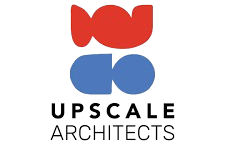For commercial real estate (CRE) owners and landlords, the challenge is more than slower leasing velocity. There is a fundamental shift in how tenants evaluate space and make decisions.
Leasing success now depends on speed, flexibility, and the ability to visualize potential.
This outlines some of the key dynamics shaping the office leasing environment and how proactive landlords can manage them in 2026 and beyond.
Hybrid Work Has Reshaped Space Demand
Hybrid work has rooted itself. While there are companies that are at the ends of the spectrum, hybrid work seems to be making itself an ongoing feature of workplace strategy. Despite being years after the pandemic, the new normal is still being decided. That uncertainty makes many tenants more reluctant to commit to long-term, fixed layouts.
As a consequence, traditional leasing cycles don’t match the speed of tenant/broker decision-making. By the time plans are drawn and budgets approved, tenants may have already changed their workplace strategy or opted for a different location.
What is needed in 2026 and beyond:
- Speedy test fits are needed to show potential quickly. Showing multiple layout options helps tenants picture how their teams could actually work in your space.
- Offer 3D visualizations that bring the space to life before a single wall is moved. This ability shows how white walls come alive to meet tenant needs.
- Provide flexible design iterations that respond to hybrid and evolving work models. This provides the optionality tenants are looking for, even after signing.
The Flight to Quality Is Real and Design-Driven
Demand has shifted. Tenants want high-quality, experiential environments that support culture, wellness, and collaboration. Outdated buildings struggle to attract attention unless they can tell a compelling design story.
As a result, many assets lag behind on design, amenities, and adaptability. They remain vacant for long periods of time because traditional approaches to reposition spaces take time and capital.
What is needed in 2026 and beyond:
- Use 3D design previews and digital test fits that showcase the potential of integrating various considerations in the space before investing heavily.
- Generate a Bill of Materials (BOM) automatically to understand cost implications in real time.
- Present tenants with visual, data-backed design options that demonstrate value — not just floorplans.

Hesitant Occupiers Require Faster Landlords
Economic uncertainty and elevated interest rates have stretched leasing cycles. Even qualified tenants are taking longer to decide, negotiating shorter terms and more flexibility.
The impact of these elements are that leasing deals are longer, manual design and approval process that can kill momentum at a critical decision stage are more critical.
What is needed in 2026 and beyond:
- Remove the bottleneck in preliminary design through automated test fits to respond to inquiries within hours, not weeks.
- Enable real-time design modifications during tours or virtual meetings. Show responsiveness to capture interest.
- Equip brokers with visual proposals that make decision-making easier for tenants and CFOs alike.
Sublease Competition Is Forcing Creativity
With sublease space flooding many U.S. markets, tenants have more options. These are often at lower cost and with ready-to-use layouts.
As a result, landlords must compete not just on price, but on the ease and speed of occupancy.
What is needed in 2026 and beyond:
- Present move-in-ready configurations using digital fit-outs and renderings to highlight flexibility.
- Leverage visual storytelling to show how your building can evolve beyond generic sublease setups.
- Use BOM-driven estimates to illustrate affordability and timeline advantages clearly.

Design and Flexibility Are the New Leasing Currency
In a market where space utilization and experience matter as much as rent, the criticality oof speed-to-visualization is speed-to-lease. Tenants want to see the “what if” and they want to see it now. Envisioning is the enabler of speed.
Unfortunately ,traditional leasing workflows rely on slow design cycles and limited data, which delay commitment and drive up costs.
What is needed in 2026 and beyond:
- Automated driven space planning tools to shorten the design cycle from weeks to hours.
- 3D visualizations make abstract ideas tangible by turning floorplans into immersive experiences.
- Instant BOMs to keep financial clarity front and center, reducing friction during negotiations.
The Tenant Experience Starts With Visualization
In 2026, leasing success will be as much about storytelling as about square footage. Tenants expect to be shown the potential of a space, not just ‘envision’. They want to see how it can adapt, support their people, and reflect their brand.
With today’s approach of describing a space’s potential, prospects are left fuzzy. They can’t grasp the value visually and instantly.
What is needed in 2026 and beyond:
- Equip your leasing team with interactive, branded visuals and custom test fits.
- Offer data-backed design options that align with how tenants actually work. How many conference rooms, circulation etc.
- Make the leasing experience feel like a partnership that can be done collaboratively (not a pitch).
.webp)
Building a Smarter Approach to CRE Leasing
The office market will continue to be defined by flexibility, experience, and speed.
Landlords who respond quickly, communicate visually, and bring design intelligence into the leasing conversation will be the ones who close deals faster — and at higher value.
The fundamentals haven’t disappeared; they’ve evolved. And the tools to manage them — from instant test fits and 3D visualization to automated BOM and agile design modifications — are redefining what’s possible in modern office leasing.







.png)









